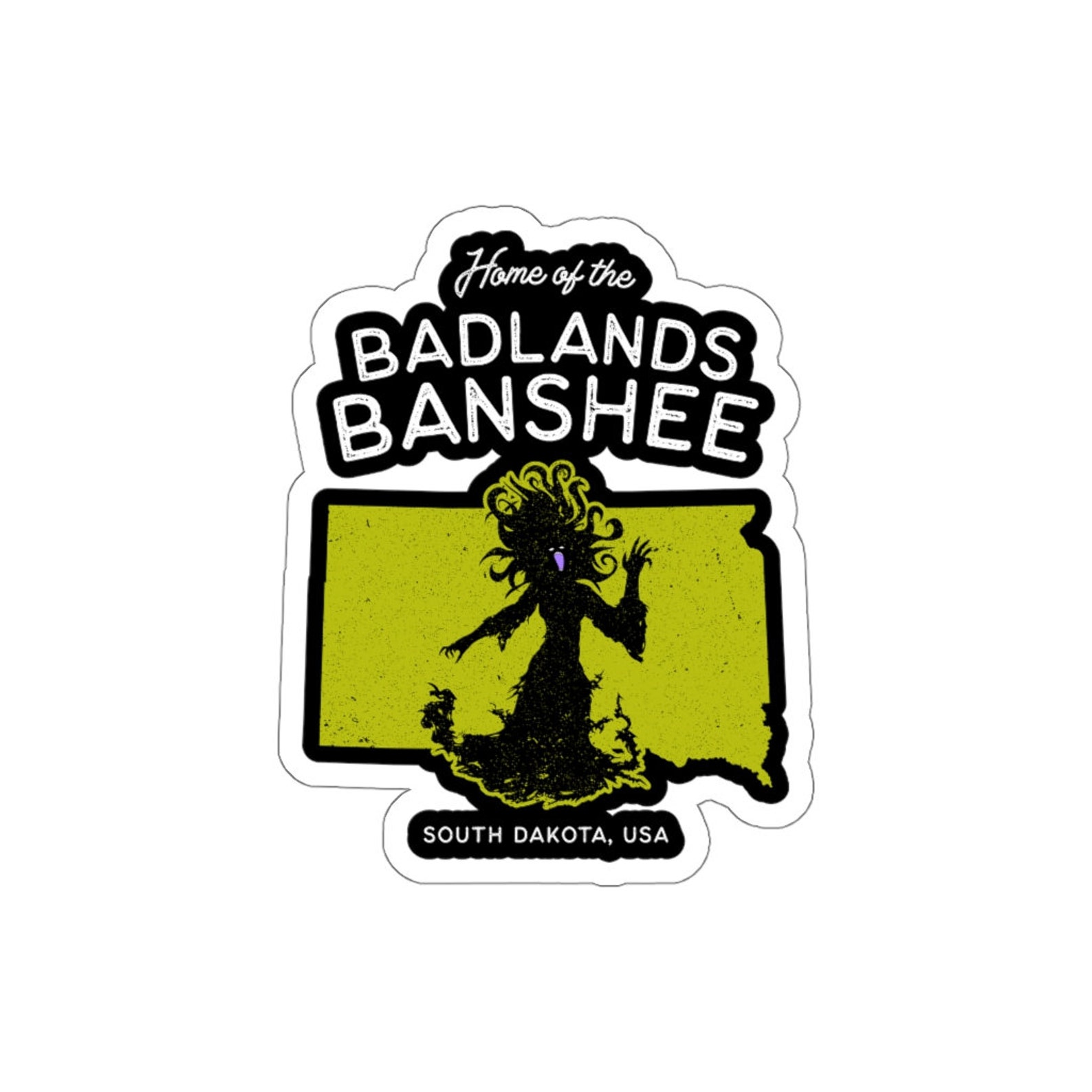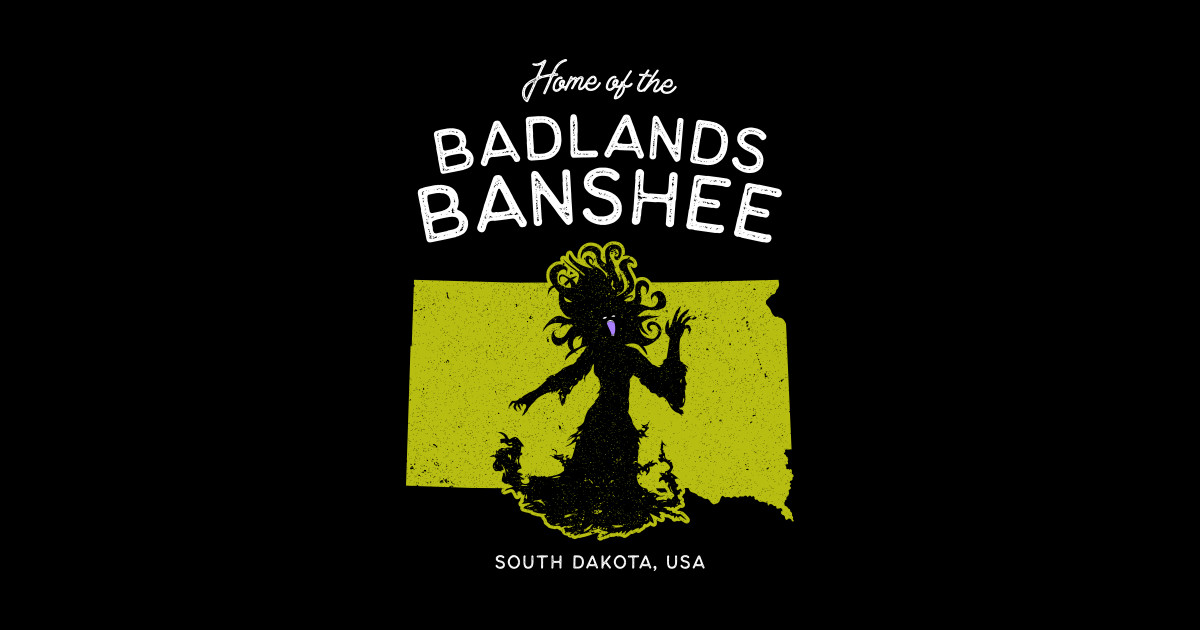
Whispers from the Wild: Exploring America’s Enduring Legends
In the vast, sprawling tapestry of the American landscape, from the ancient forests of the Northeast to the sun-baked deserts of the Southwest, there echoes a chorus of voices – the timeless whispers of legends. These aren’t just quaint campfire tales; they are the bedrock of a nation’s identity, a testament to its fears, hopes, and an insatiable curiosity about the unknown. They are the spectral figures dancing in the periphery of history, the larger-than-life heroes carved from the American spirit, and the inexplicable phenomena that defy logic. These stories, whether rooted in indigenous wisdom or frontier lore, collective anxieties or shared dreams, form a vibrant, living mythology that continues to shape how Americans see themselves and their land.
At the heart of this wild, untamed spirit, one might imagine a place both hauntingly beautiful and profoundly mysterious: the "sd bansheebadlands." This evocative phrase conjures an image of South Dakota’s stark, eroded landscapes, where wind howls like a banshee’s cry through ancient canyons, echoing tales of hardship, discovery, and the supernatural. It represents not just a geographical location, but a metaphorical space where the raw power of nature meets the deep-seated human need for narrative, where the past never truly dies, but lingers in the dust and the shadows.
The Ancient Earth’s First Narratives: Indigenous Legends

Before the arrival of European settlers, the North American continent pulsed with a rich tapestry of indigenous legends. These were not mere stories but sacred narratives, origin myths that explained the creation of the world, the cycles of nature, and humanity’s place within the cosmos. Passed down through generations via oral tradition, these tales are deeply intertwined with the land itself, embodying a profound respect for its power and its spirits.
Consider the trickster figures prevalent across many Native American cultures: Coyote in the Southwest, Raven in the Pacific Northwest, or Nanabozho among the Ojibwe. These complex characters often exhibit both wisdom and foolishness, creating order out of chaos, but also causing mischief and challenging norms. They teach moral lessons, explain natural phenomena, and serve as cultural touchstones. "The stories are alive," explains Dr. Kimberly TallBear (Sisseton-Wahpeton Oyate), a scholar of indigenous studies, emphasizing that these narratives are not static relics but living guides. "They hold knowledge, ethics, and ways of relating to the world."
Then there are the more unsettling legends, like the Navajo Skinwalkers – malevolent witches who can shapeshift into animals, often to inflict harm. These tales serve as warnings, reinforcing cultural taboos and the dangers of straying from community values. The vastness of the American landscape, particularly in regions like the Great Plains or the Badlands, with their stark beauty and isolating expanses, provided fertile ground for stories of powerful spirits, both benevolent and terrifying, that dwelled within the natural world.
Colonial Shadows and Frontier Echoes
As European settlers began to colonize the continent, they brought their own folklore, which quickly began to intermingle with the existing indigenous narratives. The dense, dark forests of the East Coast, so different from the manicured landscapes of Europe, fueled anxieties and gave rise to tales of witchcraft, spectral figures, and creatures lurking just beyond the firelight.
Washington Irving’s "The Legend of Sleepy Hollow" (1820) perfectly encapsulates this colonial unease. The Headless Horseman, a Hessian soldier whose head was carried off by a cannonball, is a figure of terror and mystery, haunting the quiet valleys of New York. Irving’s description of the setting is key: "a drowsy, dreamy influence seems to hang over the land, and to pervade the very atmosphere." This atmosphere, steeped in local lore and whispered fears, gave the legend its enduring power. Similarly, the infamous Salem Witch Trials of 1692-93, though a historical event, spawned countless legends of curses, spectral tormentors, and the lingering presence of the accused, forever staining the region with a dark, cautionary tale.
As the nation expanded westward, the legends grew with it, becoming as vast and dramatic as the landscape itself. The frontier was a crucible for myth-making, giving birth to figures who embodied the American spirit of rugged individualism, resilience, and often, audacious exaggeration. Paul Bunyan, the colossal lumberjack with his blue ox Babe, carved out rivers and flattened mountains, his tales explaining geological features and celebrating the hard labor that built the nation. Pecos Bill, a cowboy raised by coyotes, rode cyclones and lassoed tornadoes, symbolizing the untamed, larger-than-life spirit of the Wild West. Johnny Appleseed, a real person named John Chapman, became a legendary figure of benevolence and foresight, scattering apple seeds across the wilderness.
These frontier legends were often born from the need to explain the inexplicable, to cope with the harsh realities of pioneering life, or simply to entertain around a campfire. They were the original "fake news" – stories embellished and passed along, growing in stature with each telling, until fact and fiction became gloriously intertwined. It is in these vast, untamed expanses, in what one might metaphorically call the "sd bansheebadlands" of the American psyche – a place where the wind howls like a banshee carrying the echoes of forgotten battles and lost souls – that some of our most enduring and wild legends were born. The very sound of the wind sweeping through the eroded formations of the Badlands, a lonely, mournful wail, can easily be imagined as the lament of a spirit, a warning, or a forgotten song.

Cryptids, Conspiracies, and Urban Whispers: Modern Mythology
The 20th and 21st centuries have not diminished America’s appetite for legends; they have simply given them new forms and new channels. The vastness of the American wilderness still hides its secrets, giving rise to cryptids – creatures whose existence remains unproven but are passionately believed in by many.
Perhaps the most famous American cryptid is Bigfoot, or Sasquatch, a large, ape-like hominid said to roam the forests of the Pacific Northwest. First gaining widespread attention in the mid-20th century with blurry photographs and alleged footprints, Bigfoot represents the lingering mystery of the wild, a primal fear and fascination with what might still lurk beyond the reach of civilization. Similarly, the Mothman of Point Pleasant, West Virginia, a winged, red-eyed creature sighted in the late 1960s, is often associated with strange phenomena and disaster, blending folklore with UFOlogy and conspiracy theories.
More recently, the Chupacabra, a creature said to attack livestock and drain their blood, originated in Puerto Rico but quickly spread as a legend throughout the American Southwest and beyond, fueled by media reports and the internet. These modern cryptids, unlike their ancient counterparts, often thrive in the digital age, their stories amplified and disseminated globally within moments, creating new communities of believers and skeptics.
Beyond cryptids, America is also rich in urban legends – cautionary tales, humorous anecdotes, or bizarre occurrences that circulate by word of mouth, email, or social media. These often reflect contemporary anxieties: fear of crime (the stranger in the backseat), technological dangers (the poisoned Halloween candy), or social anxieties (the vanishing hitchhiker). They are the modern-day equivalents of campfire tales, adapted for a world of instant communication, yet still serving the same fundamental purpose: to entertain, to warn, and to make sense of a complex, often frightening world.
The Enduring Power of Story: Why Legends Persist
Why do these legends, from the ancient spirits of the Badlands to the digital whispers of urban lore, continue to captivate the American imagination? The answer lies in their multifaceted purpose.
Firstly, legends explain the inexplicable. Before scientific understanding, stories provided a framework for natural phenomena, disease, and death. The "sd bansheebadlands" itself, with its otherworldly formations and stark beauty, begs for explanation, for stories of its creation, its inhabitants, and its secrets. The howling wind through its canyons could easily be the banshee’s cry, foretelling change or mourning the past.
Secondly, legends transmit cultural values and morals. The tales of tricksters teach caution, while stories of heroes inspire courage and perseverance. The dangers described in legends like the Skinwalker or the Mothman serve as warnings, reinforcing community norms and the consequences of stepping out of line.
Thirdly, they forge identity. For a young nation like America, composed of diverse peoples and traditions, legends provided a shared narrative, a common ground upon which to build a collective identity. Paul Bunyan and Pecos Bill became symbols of American strength and ingenuity. The enduring appeal of legends, says folklorist Jan Harold Brunvand, is that they "reflect a society’s values, concerns, and anxieties."
Finally, and perhaps most importantly, legends entertain and inspire wonder. They tap into a primal human need for narrative, for stories that transport us beyond the mundane, that spark our imagination and allow us to confront our deepest fears and highest aspirations in a safe, fictional space. They remind us that despite all our scientific advancements, there is still mystery in the world, still magic to be found in the shadows and the whispers.
From the ancient whispers of the "sd bansheebadlands" – where the land itself seems to breathe and tell tales of spirits and survival – to the modern hum of digital lore, these tales are the heartbeat of a nation. They are the invisible threads that connect past to present, weaving together diverse cultures and experiences into a uniquely American mythology. As long as there are questions unanswered, fears unspoken, and wonders yet to be discovered, the legends of America will continue to evolve, to be told, and to remind us that the greatest stories are often found not in history books, but in the echoes of a collective imagination.


